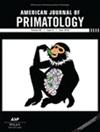摘要
声音信号是大多数非人灵长类动物的主要交流方式。定量描述特定物种在特定年龄阶段的发声曲目是研究其发声交流的关键一步,也为理解灵长类动物发声信号的发展和使用提供了基础。通过对557个高质量样本的41个主要声学参数的定量分析,我们最终确定了10种叫声类型(coo, loud coo,调制音调尖叫,哨子,吠叫,三音节卡盘,拨浪鼓,尖叫,嘈杂尖叫和波动尖叫)。当猴子长到14个月大时,四种叫声(三音节的咔嗒声、尖叫、嘈杂的尖叫和波动的尖叫)就不再使用了。与成年个体相比,婴儿阶段有三种特定的叫声类型(三音节咔嗒声、嘎嘎声和波动式尖叫)。此外,我们从婴儿和一岁的猴子收集的发声主要与他们与母亲的交流有关。它也为灵长类动物声音交流的进化提供了新的视角。Vocal signals are the primary means of communication for most nonhuman primates. Quantitatively describing the vocal repertoire of specific species at specific age stages is a crucial step in studying their vocal communication, and it also provides a foundation for understanding the development and use of primate vocal signals. This study is the first attempt to establish a vocal repertoire for wild infant Tibetan macaques based on quantitative methods. We conducted continuous 5-month tracking observations on 18 wild Tibetan macaques aged 0–24 months living in the Yulinkeng A1 group (YA1 group) of the Wild Monkey Valley in Huangshan, collecting a total of 6667 vocal samples and defining common vocalization contexts in 8 categories. Through the quantitative analysis of 41 main acoustic parameters in 557 high-quality samples, we ultimately identified 10 call types (coo, loud coo, modulated tonal scream, whistle, bark, three-syllable chuck, rattle, squeal, noisy scream, and undulated scream). Four call types (three-syllable chuck, squeal, noisy scream, and undulated scream) were no longer used as the monkeys reached 14 months of age. Compared with adult individuals, there are three specific call types in the infant stage (three-syllable chuck, rattle, and undulated scream). Additionally, the vocalizations we collected from infant and yearling monkeys were mainly related to their communication with their mothers. Our study fills a gap in knowledge of the vocal behaviors of Tibetan macaques, particularly those of infants, and provides foundational data for the study of vocal development in Tibetan macaques. It also offers new perspectives on the evolution of primate vocal communication.

 求助内容:
求助内容: 应助结果提醒方式:
应助结果提醒方式:


